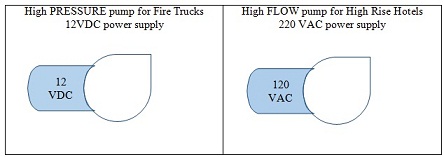Assignment
Pretend you are an assistant production manager at Digit Pumps, maker of two types of specialized water pumps. One division makes pumps installed on fire trucks and the other division makes pumps for hotel hot water systems. Both pump systems have similar designs that include an upfront customized electronic control system and a mechanical flow control system. There are many components that are used in both systems.

You work in the division that makes hotel pumps. The whole company is ISO9000 certified, but the fire engine pump division holds several other certifications from NFPA (National Fire Protection Association) related to the manufacture of fire/safety related equipment.
The external audit by the NFPA registrar is coming up next month for the fire truck line. You have been asked to lead an informal internal audit this week of the fire truck line as a practice for the official audit that will follow next month.
The fire truck division is working on an order for 15 identical units for a big fire district in New York, customized to fit the trucks and radio control systems used in the area. This is to say, the 15 units for NY are identical, but the next batch of units which will go to some other agency, will be identical, but customized for that agency. The production manager issues controlled work instructions and schematics for each customized batch. The work instructions are pretty much the same from batch to batch, but the schematics indicate the customizations. The overall electronic design is pretty much the same from batch to batch, with a few changes in the circuits where wires will be soldered on the generic circuit board, but mostly the changes are different resistors and components are inserted depending on the customization.
Here is where you start your audit. You start by watching the work being done in an area where workers are assembling and customizing the circuit boards for the 12V controller system. You notice one of the workers isn't paying much attention to the schematic posted at his station. Instead of looking at the posted schematic, he keeps looking in a drawer at his workstation when he thinks no one is observing him.
You start up a conversation with the worker and ask about the posted diagram. After a few minutes, he explains its purpose which is to show the details of changes to be made to each batch. You say it seems silly and you ask what he really uses to keep track of his modifications. He pulls open his drawer and you see a schematic that must be three years old. It has clearly beenmarked and erased -- time and time again. New circuit changes have been hand drawn which must indicate the wires to be added and the values of resistors and the identifiers for components are written in by hand. He tells you that when each schematic is issued, he copies the changes on to his personal copy and builds the batch from what his hand copied version instead of the controlled version.
The rest of your audit was uneventful.
Task
1. Create a Corrective Action Report to describe what you found. (finding? or observation?)
Note: this does not have to be a "form" but you can create one if you want. It is acceptable to list the items necessary for a corrective action report.
On a separate page
2. Explain how you should handle this, considering the four "windows" of Reframing Organizations. Note: you should list all four "windows" and the implications of the situation from each "window." Hint: some "windows" are more important than others and some have implications for future operations.
You can invent corporate elements, such as the organizational structure of who supervises who and any reasonable time frame.
The response should include a reference list. Double-space, using Times New Roman 12 pnt font, one-inch margins, and APA style of writing and citations.